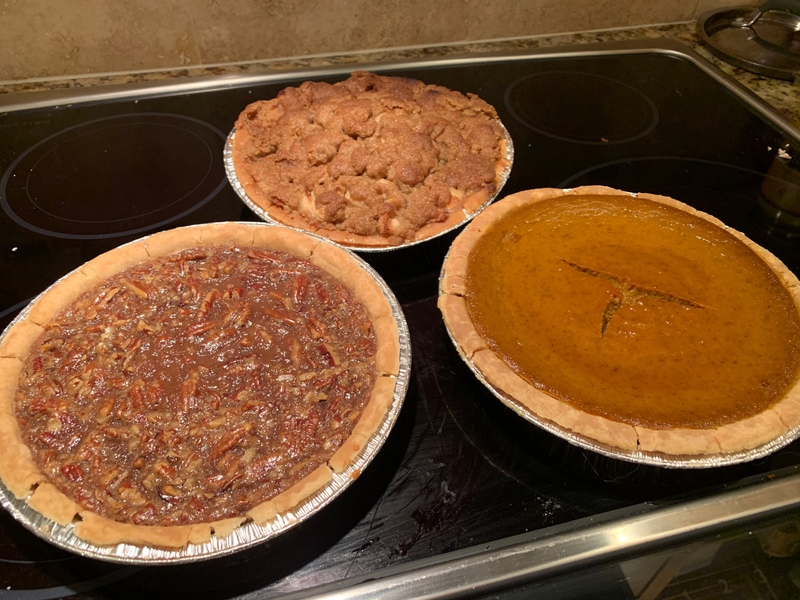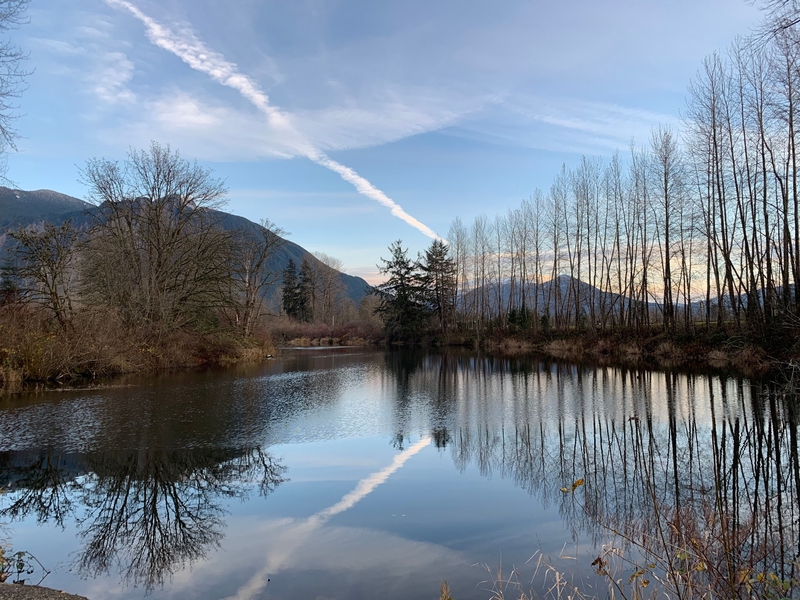Happy (late) Thanksgiving! 🦃
Open Source Stuff
This weekend, I published
v0.2 of ep, my CLI emoji
picker tool. It wasn’t a huge update, but it added some nice quality-of-life
improvements like making the emoji grid be responsive to your terminal window
size and working correctly when run in tmux. I also updated the emoji
definitions for 2020. 🥳
I also took some time to contribute back to miniflux, my RSS reader of choice. Miniflux is pretty much my favorite open source tool right now, as judged by how much daily utility it brings me. I was glad to be able to contribute a few commits back to the project.
Git LFS
One of the more annoying parts of my blogging pipeline is dealing with images. My image workflow is, in short, (1) add the image to the folder for the current post, (2) resize the image and change the JPG quality to reduce it to a reasonable size using GIMP, (3) check the file into Git. Step (2) is really only necessary because of step (3). Namely, I know that whatever I check-in to Git will be in my repo “forever”, which makes me super cautious about adding full-sized images/videos.
I thought I might be able to get away with larger media files in my blog’s Git repo by using Git LFS. Git LFS has existed for a while now, and seems to be a pretty good way of handling media in Git repos. Essentially, it’s a layer of indirection on top of Git that allows larger files to be uploaded to a separate server, leaving behind just a small pointer file in the original Git repo.
GitHub has great support for Git LFS, and I was able to migrate my entire blog to using it in just a few commands.
However, I host my blog on Netlify, which doesn’t play nice with Github’s LFS. They have their own large file solution, Netlify Large Media which also uses Git LFS. Unfortunately, as far as I can tell, the two are mutually exclusive. Netlify’s documentation requires that you disable your Github/Gitlab LFS, and point to their LFS server.
I don’t know if this is a limitation of LFS generally, or a limitation of Netlify’s LFS implementation, but it made me uneasy enough to abort the migration. To be clear, I like Netlify – their product is great, and I’m indebted to their free tier for hosting this blog. However, I feel like hosting my repo’s images exclusively on their servers makes me too closely linked to them. It feels like my Git repo is no longer the actual source of truth.
I sympathize with Jim Nielson’s post, which makes this same point:
Not that I ever plan to migrate off Netlify, but let’s be honest: it could happen. I’ve had to change hosting providers before. And the one lesson I’ve learned is: the looser the coupling between who I host with and how I host stuff, the less the pain in migration.
Netlify’s LFS solution (and perhaps Github’s too, if I think about it hard enough) feels like it breaks the Git abstraction of “everything being in one place” and “decentralized by default”. I’m glad that LFS exists for repos that need to track truly large files, or binary files that change regularly. But, the more I looked into it, the less I’m convinced it’s a good fit for my small-ish blog.
Baking: Lots of Pie 🥧

Pecan, Dutch Apple, Pumpkin (Left to Right)
I enjoy cooking on Thanksgiving, but pie making is my favorite part of the day. It’s a bit tricky baking for family members with food allergies, but making something that everyone can enjoy is worth the extra challenge. I didn’t make my own crusts this year, since making gluten-free pastry is really tricky, and the store-bought pie shells are much better than any of my attempts.
My focus for this year was to make good dairy-free pie fillings, and all 3 were a success – at this point, my allergen free pie fillings are as good as the “real thing”. The trick is to use full-fat Coconut Milk for the custard pie fillings. I used this Pumpkin Pie recipe and this Pecan Pie recipe. The Dutch Apple Pie recipe was even easier – I just used a normal recipe, but subbed dairy-free butter.
Snoqualmie
In case you need a reminder, Washington is a beautiful place. This was taken outside of Snoqualmie, in the Three Forks Natural Area:

Assorted Links
-
Some optimism about America’s Covid response – Matt Yglesias left Vox and started his own policy-focussed Substack blog. This was my favorite of his first round of posts. Expressing an even mildly optimistic viewpoint is difficult in 2020, so this was a welcome salve of an article.
All this digital tech is not going to show up in a clear way in the productivity statistics because the pandemic itself messes all the data up. But I think it’s clear that if we had to weather this pandemic with the tech of 20 years ago, we’d have had worse public health outcomes and worse economic outcomes. Two decades’ worth of internet and mobile tech has proven its value, and more good things are to come if this period of experimentation ends up helping to accelerate the development of widely used remote work, telemedicine, and online education models.
More broadly, the extent to which the panoply of both big tech companies (Microsoft, Apple, Google, Amazon) and smaller startups (Zoom, Slack, DoorDash) are in fact making our lives better in tangible ways probably deserves to take some of the edge off of the kind of anti-billionaire sentiment that holds that even billionaire charity is bad.
-
The Internet Archive is now preserving Flash games and animations – Who had “Flash makes a comeback” on their Things-That-WebAssembly-Enables bingo card? Not me. The Internet Archive is hosting a bunch of old Flash content using the Ruffle.rs Flash Player emulator, which was written in Rust and compiles to WebAssembly. I’m glad we’re back in a world where the Badger Badger Badger animation can be enjoyed in its former glory.
-
TAKARAJIMA – T-SQUARE – This one’s been sitting in my “list of links to post” for a while now, and I don’t really have a great way to frame it other than this is a great performance of Japanese Jazz Fusion. It features an EWI (Electronic Wind Instrument), which is fascinating in its own right.